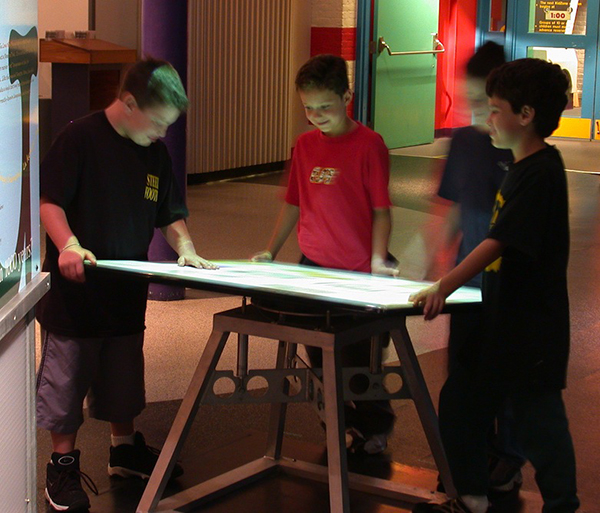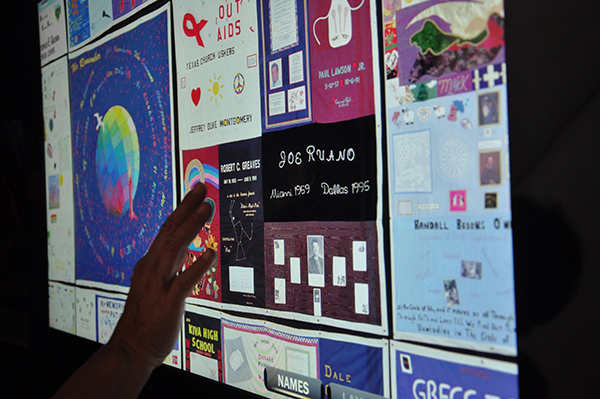Shaping Culture with Digital Public Interactives
This story first appeared in Xperience, the official publication of AVIXA. For more articles, take a look inside.
By Cindy Davis
Digital, public interactive displays are ubiquitous, from ATMs to touchscreen-enabled taxis, to electronic billboards. As digital displays and interactive software mature, designers are developing more thoughtful experiences.
At the University of Texas at Dallas School of Arts, Technology, and Emerging Communication, Dale MacDonald, Associate Dean of Research and Creative Technologies, and Heidi Rae Cooley, Associate Professor and Co-Director of the Public Interactives Research Lab, are redefining how we think of these interactive displays.
Referring to digital public interactives, MacDonald explains, “We use the term to refer to creative uses of technologies for the purposes of cultivating new understanding and awareness of a place, event, process or product. Public interactives take advantage of innovative storytelling techniques, creative modes of sociality and community engagement to cultivate interaction, invite informed reflection and generate conversation.”

It’s important that public interactive interfaces encourage collaboration and conversation among the public, according to Cooley. “We are interested in encouraging people to reconsider technologies, to think of them as cultural and culture-shaping artifacts, not simply tools,” she says.
MacDonald and Cooley are pushing the boundaries of established platforms to foster greater understanding of how technologies shape the ways we relate to each other and the world. “Projects developed under the ‘public interactive’ rubric tend to bring to the foreground the frequently unacknowledged or little-known aspects of culture, or they inspire alternative and innovative engagements with technologies,” says MacDonald. “They do so with attention to facilitating social exchange.”
So-called tilty tables invite users to navigate content (e.g., zoom in/out, scan) by rotating and tilting the interactive, table-top display. They were developed as a way of involving groups of people in an exploration of information.
Cooley says the ideation process starts with an interdisciplinary group. A creative team should be willing to model new ways of thinking, doing and sharing. “There needs to be a commitment of time and resources — broadly construed — and a willingness to fail,” she says.
A notable success is the AIDS Quilt Touch interactive, developed to document and present digitally the AIDS Memorial Quilt, the world’s largest work of community art. Displayed for the first time in 1987 at the National Mall in Washington, D.C., the physical quilt covered a space larger than a football field and included 1,920 panels, most commemorating the lives of people who had died of AIDS. Now weighing 54 tons and comprising more than 48,000 panels, the quilt can no longer be displayed in one place.

But today, visitors to various locations around the country can experience an interactive digital presentation of the quilt through large, interactive touchscreens. They pinch and zoom on a digital mosaic displaying all quilted panels or tap on the screen
and enter a name to search for. It’s a powerful example of the impact of digital public interactives. “How else,” Cooley asks, “does one make such a vast cultural, material artifact of sociohistorical significance accessible
to the public?”





